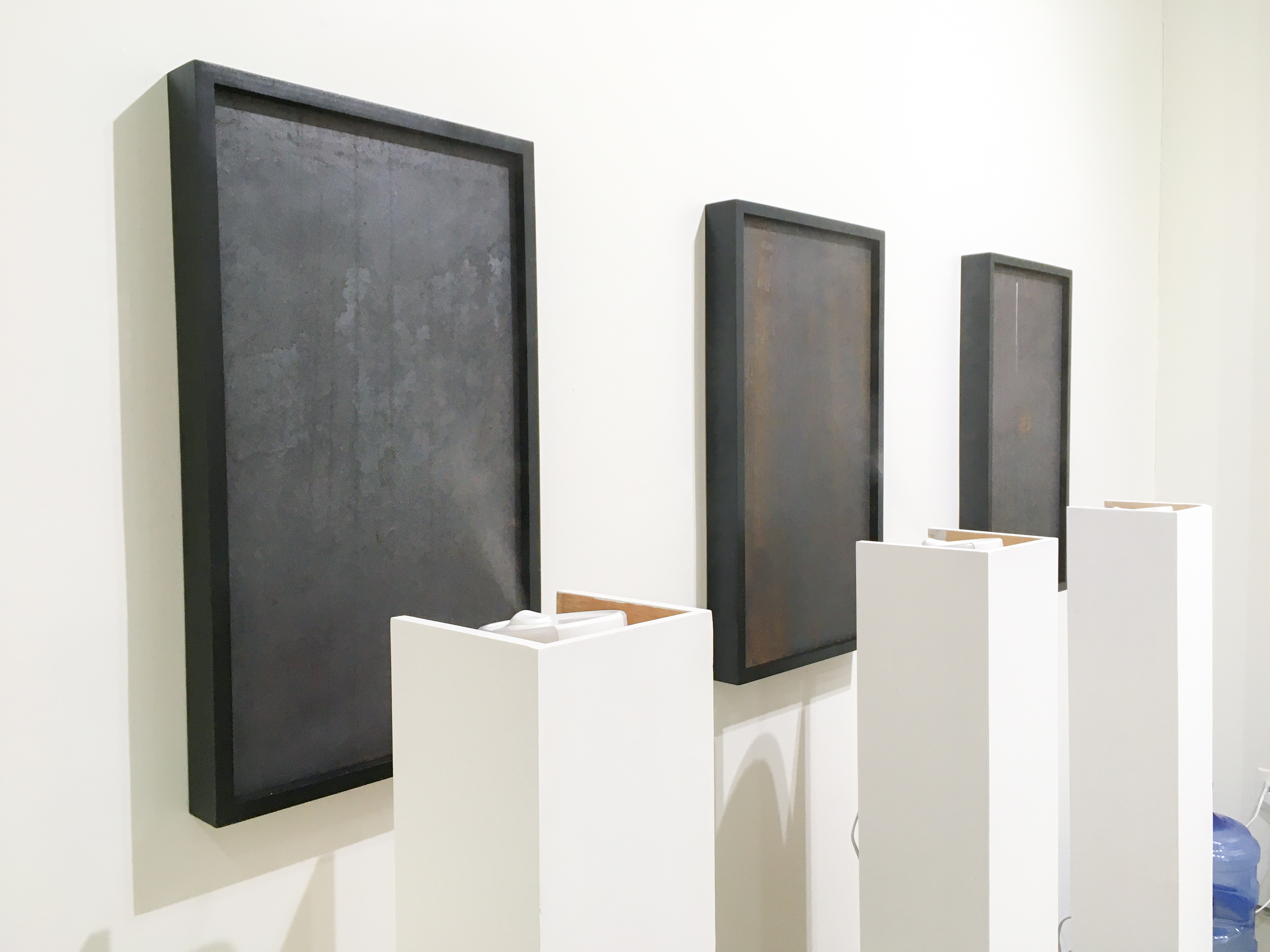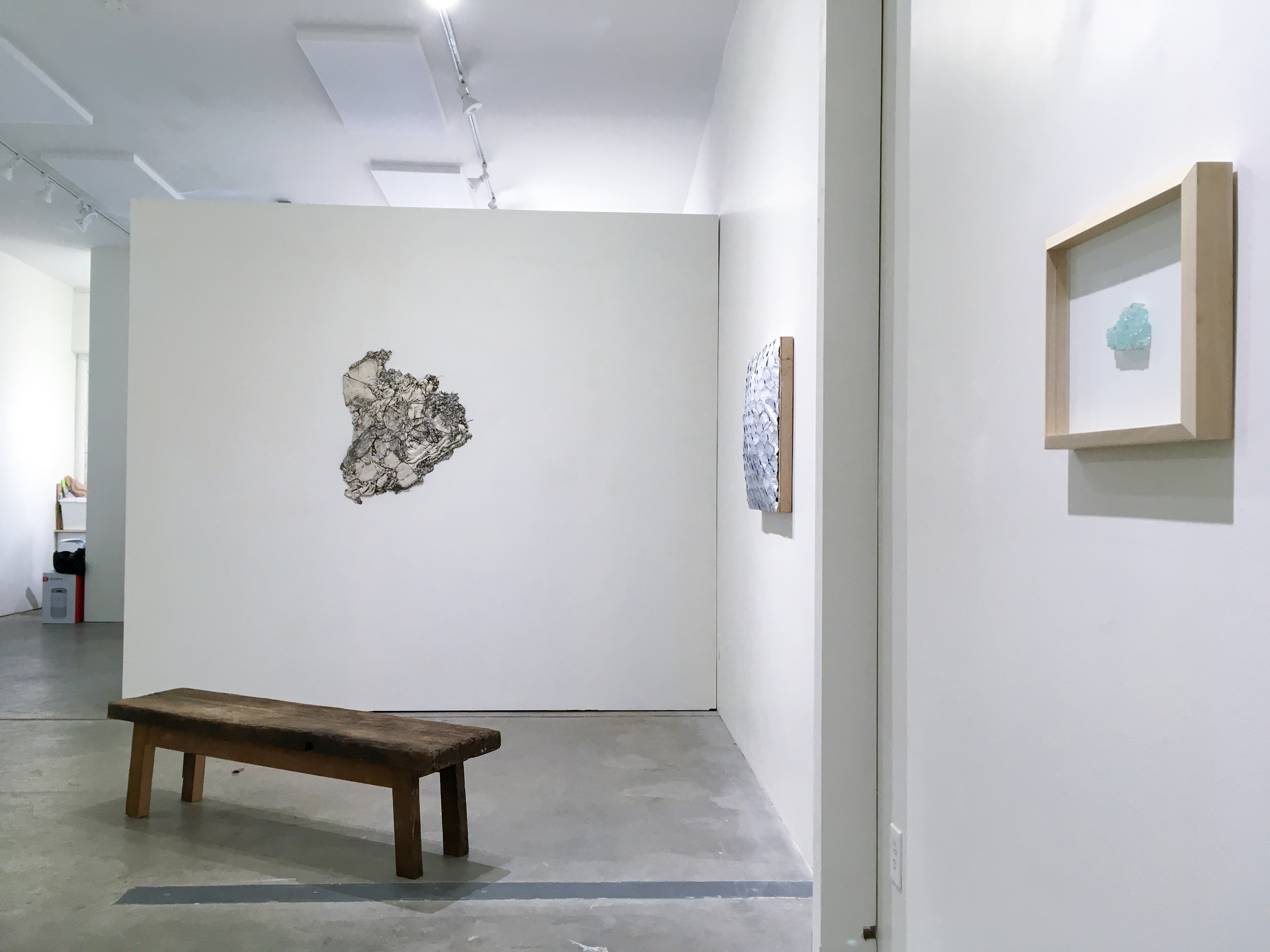Conversation
Seeing You/Seeing Me: Conversation and Unattended
Artists Mami Takahashi and Russell Borne in discussion with curator Kristan Kennedy, regarding their simultaneous solo exhibitions at Carnation Contemporary in July 2022. The following transcript is edited for length and clarity.


Kristan Kennedy Hi everyone! First off, I wanted to thank Mamie and Russell for the invitation to be in conversation with them tonight. They currently have two distinct installations up at Carnation Contemporary, an artist-run space and collective here in Portland, Oregon. My name is Kristin Kennedy, and I’m an artist and the visual art curator for the Portland Institute for Contemporary Art.
Mami Takahashi’s exhibition is called Seeing You/Seeing Me: Conversation. Takahashi started making performances every day in 2014, to visualize her response to social, cultural, and political questions in her new home country.
Russell Borne’s show is called Unattended, and the works explore the different elemental experiences of time: experiences of destruction, redemption, and some places in between.
Both of you are dealing with notions of time. Time is material in your work, even though you have disparate practices. The work looks radically different from each other, yet there are some threads that tie this work together.
Mainly, your work deals with series and long durations: you’re documenting things, you’re testing things, you’re collecting evidence; often in an attempt to make invisible feelings visible. By caring for damaged things, or damaging pristine things with various influences such as water, air, cleaning products, et cetera—you both are tapping into highly personal material. But there’s some obscuring going on here as well.
[to Mami] I was wondering if you could talk a little bit about your silver dome and how it came to be, how it operates, and how you’re documenting it for this show.
Mami Takahashi Yeah. The dome was made with privacy film. You can see out from the inside, but don’t clearly see in from the outside. I thought that this is the material that was right for me to use for that dome shape.
I was at my grad school the first time I met this material. I started making a portable structure covered by paper, and situated myself inside. Then I walked to the nearby food carts to order food, to test how it works. I felt a sort of comfort when I situated myself to not be seen by others, in different cultural settings away from my home country.

KK So you built this silver dome to wear over yourself, and it put enough distance between you and the people you were trying to communicate with where you felt safe. You could observe them, but they couldn’t see you. You didn’t feel as exposed or critiqued, as you were trying to navigate American culture, translation, and all these things. You talked about it creating this awkward experience for other people, so you’re also maybe helping other people, even if they don’t know it.
People are really drawn to the photographs because they’re kind of easy to read, and there’s comedy in there. Then the video in the show is being projected on Mylar; it’s crinkled and loose. The audio is mismatched, and you’re trying to make out what’s happening. Can you talk about how the video was different, or performing for the camera was different from the video?
It’s interesting because I think sometimes people assume that work that’s exhibited inside of a gallery is finished and understood by the artist. But a lot of times, you need the work to be shown and have an audience participate in it to understand it even more, to see how people react to it, and to talk to people about how they experience it. So in a way, this exhibition is also an experiment in seeing how people react to the dome and react to the material of the dome.
Russell, your work also kind of feels like an experiment in some ways. Some work feels very finished, like this broken piece of glass with its pristine frame—yet other works, like the potatoes on the shelf or the steelwork, feel like they are in process.
When we spoke earlier, you mentioned that in this work you’re processing and communicating a sense of loss or an idea of certain types of relationships. Can you speak to that a bit, and how it translates into your material experiments, and the role that abstraction plays?

Russell Borne Great question. To start, this time we have been living in as been like jumping from one crsis to the next. Whether it’s personal crises or cultural ones, it seems as if we are all just waiting for time to pass, and hoping that things are gonna get better. I’m thinking about that passing of time as an element that is sometimes destructive as well as constructive. There’s a compressed element when we’re able to see those binaries at once.
All the things in the room are a project. It’s not finished until it’s here in the room, and people are looking at it and changing it—like these potatoes on the wall. Like Mami, I have really gravitated to reflective materials; there’s a beauty to that property. Something like Freud’s ideas of the mirror stage of cognitive development—to see a reflection of yourself, and understand self-identity. So when we (Mami and I) were talking (about the exhibitions), I was like, “Oh, this is wonderful; we’ll play with these materials together.” It’s been really fun to work separately in our own studio practices, and then come together.
KK Can you talk about that little piece of framed glass? Because I think that all of the works are communicating this sense of a clock in some way—they’re measuring time. They’re being affected by time, and that piece feels sort of frozen in time.
RB Yeah. This has more of a personal narrative attached to the material. Its source is this tempered glass that was part of this giant structure I built. For the last two years, I worked on this little house in my yard that was intended to become an exhibition space, yet signified the end of a really important relationship. So it’s all the labor and time and money and loss. With a hard swing, I smashed this sheet of tempered glass into a million pieces. Tempered glass shatters beautifully. That action was releasing these things, and then it’s frozen in that moment. This is the last little chunk. I think of it as being about survival, because that’s the only little chunk that somehow held together.
KK That’s really interesting.
[to Mami] I know that you have many simultaneous projects going on. I know that you’re documenting a lot of languages and translating them. You were doing a project at Mass MoCA, where you were laying plastic plates out and collecting things, and then inking them up and printing them every day. You have this sort of daily or monthly practice going on. When you look at this, do you think this project is something that you’re gonna push into the future more? Do you ever think about retiring it? When does this project end for you?
MT You know I am very influenced by On Kawara, right? His practice centered on the notion of time and place, and his Date Paintings were structured to go on for 10 years. So it’s kind of like that, I gotta set up the duration myself and document my time at different locations in the US, every time I travel.
KK We put all the emphasis on new work, but there’s a lot of slow-moving ideas in people’s work.
Russell, what do you think the lifespan of this work that you have in the show is like?
RB You know, there are some pieces that are already pickled in time.

KK You framed the piece of glass. I don’t know how, if you’ll stop the patina or not.
RB Just let it keep going.
KK I’m thinking about the potatoes. Will you archive those? Will you plant them? Is it temporary? Will your work return to the land? Are you gonna take that squashed piece of rubber and put it back out in the environment, or does it now suddenly become pristine forever?
RB Each will be treated a little differently. With the steel pieces, I cleaned them up really good, brought them in, and then started the rusting process. To me, they will be a timekeeper of this exhibition, and the state of corrosion freezes at the end of this exhibition.
Then there is the silicone piece: I’m calling this Street Scab. It was a found object from out on the street. I have created three others to mimic the found version, and they’re out in the city as I speak. I was so interested to see how each location imprints different outcomes of time and debris on its surface. I just don’t think that the magic is going to be reproduced.
As artists, we see something beautiful out in the world, and we want to capture it, own it, and share it. I think that this could be a future investigation for me: the failed attempt to reproduce something.
KK Thank you to Mami and Russell for talking today, and thank you for providing this space for artists. It’s a space that is filling a void in the Portland art scene.
photo credit: Heather Lee Birdsong
